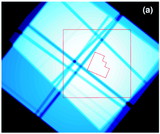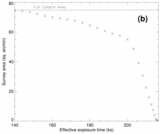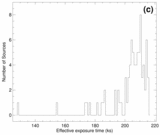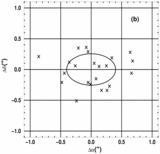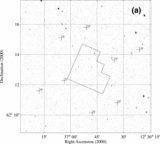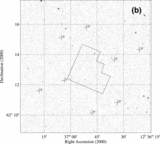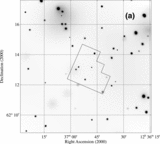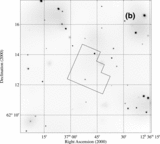Image Details
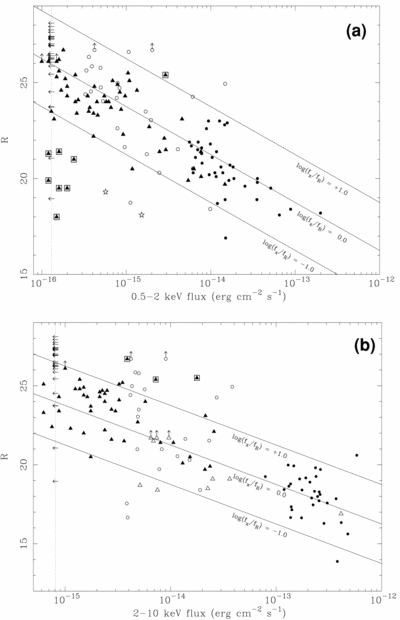
Caption: Fig. 8.
Plots of R magnitude vs. (a) 0.5–2 keV flux and (b) 2–10 keV flux for X‐ray–detected sources. Filled triangles are sources from this paper, open triangles are those from Brandt et al. (2000), and open circles are those from Mushotzky et al. (2000). Filled circles in the upper and lower panels are sources from Schmidt et al. (1998) and Akiyama et al. (2000), respectively. We plot only the AGN from Schmidt et al. (1998), excluding galaxies, stars, and groups. The two stars in the upper panel are spectroscopically identified stars (see Table 6 and § A1), and the left‐pointing arrows near the left‐hand edges of the plots are AGN candidates discussed in § 7.5; F606W magnitudes have been converted to R assuming F606W−﹩I=0.22﹩. The slanted lines are calculated for 0.5–2 keV (2–10 keV) X‐ray fluxes (fX) in the top (bottom) panel. The vertical dotted lines show our detection limits for an assumed ﹩\Gamma =1.4﹩ power‐law spectrum; sources slightly beyond these lines have spectral shapes differing from a ﹩\Gamma =1.4﹩ power law. The boxes mark our sources with extreme ﹩\mathrm{log}\,( f_{\mathrm{X}\,}/f_{R}) ﹩ ratios as discussed in §§ 5.1 and 5.4.
Copyright and Terms & Conditions
© 2001. The American Astronomical Society. All rights reserved. Printed in U.S.A.


